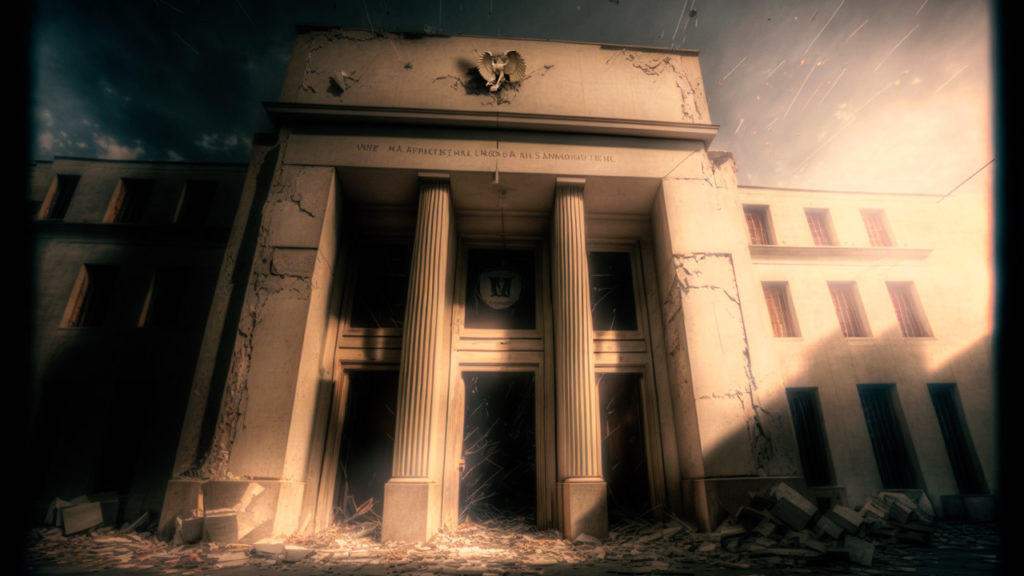The Fed Is Losing Billions and It Could Take Four Years to Make It Up

The Federal Reserve has lost well over $100 billion dollars, and even when it returns to “profitability,” it will likely take over four years before the central bank is completely in the black.
And you’re going to foot the bill.
In September, Fed losses crossed the $100 billion mark. As of Nov. 22, total losses stood at $124.4 billion and rising.
In most instances, a business bleeding red ink has a big problem and could ultimately go under. Not so for the Fed. In fact, losing money isn’t a problem for the central bank at all. Fed officials emphasize that losses in no way impact the central bank’s ability to run monetary policy. Nobody gets fired. The central bank won’t go out of business.
But the red ink is a big problem for the US government. I’ll explain why in a moment.
To put this net loss in perspective, the largest yearly gain over the last 10 years was in 2021 when the Fed reported a $104 billion net income. In other words, the central bank has lost more money in the last year than its biggest gain in at least a decade.
Why has the Fed lost over $100 billion in a little over a year?
In a nutshell, the central bank is paying out more in interest than it is earning.
The central bank earns interest income on the bonds it holds on its balance sheet. But the Fed also pays out interest to other financial institutions that park money there. The bonds it bought during multiple rounds of quantitative easing (QE) and still holds on its balance sheet were relatively low-yielding. But with rates much higher today, it is paying out interest at a much higher rate.
Through the first half of 2023, the Federal Reserve reported $88.4 billion in interest income. But it paid out $141.8 billion in interest expense. That adds up to a lot of red ink.
The last time the Fed reported net operating losses was in 1915.
So, what happens when the Fed loses money?
In most cases, a business feels the pain when it loses money. But when the Fed loses money, the US government feels the pain. And ultimately, you and I foot the bill.
Under the Fed’s charter, the central bank remits its profits to the US Treasury. This helps pay down the massive federal budget deficits. When the Fed loses money, the Treasury loses its payday. That means even bigger budget deficits.
Bigger deficits mean the government has to raise taxes or borrow even more money to cover the loss. Either way, we pay. You either get a bigger tax bill or you pay the inflation tax when the Fed prints money to monetize the debt.
But what about the Fed? Isn’t losing money a problem for the central bank?
Short answer: no.
Not at all.
If a normal business loses money, it must cut costs, sell assets, borrow money, or take other actions to stop the losses. If it loses enough money, it will eventually eat away at the company’s assets. If this goes on long enough, the company will become insolvent. Sustained losses ultimately mean bankruptcy.
The Fed doesn’t have to do any of these things. In fact, it can lose money year after year and go right on doing business as if there were no losses.
How?
Because we live in a world where the Federal Reserve gets to make its own accounting rules. And according to its own accounting rules, any net loss magically turns into a “deferred asset.”
[I]n the unlikely scenario in which realized losses were sufficiently large enough to result in an overall net income loss for the Reserve Banks, the Federal Reserve would still meet its financial obligations to cover operating expenses. In that case, remittances to the Treasury would be suspended and a deferred asset would be recorded on the Federal Reserve’s balance sheet.”
Under this scheme, an operating loss does not reduce the Fed’s reported capital or surplus. The bank simply creates an “asset” on its balance sheet out of thin air equal to the loss and business continues as usual. (This is kind of like money printing.) As losses mount, the size of this “asset” will grow.
There is no limit to the size of this “deferred asset” and no time limit on its existence.
Once the Fed returns to profitability, it will retain profits in order to reduce the amount of this imaginary asset. In other words, the US government won’t get any money from the Fed until this “asset” is zeroed out. At that point, the Fed will resume sending money to the federal government.
According to the St. Louis Fed, this won’t likely happen until mid-2027.
This has no real impact on the Fed, but it does mean the US government will see a long-term reduction in revenue resulting in a budget deficit higher than it otherwise would have been as long as the Fed is losing money.
This isn’t good news for a government already buried in debt and running massive budget deficits month after month. It means the US government will have to borrow even more money that the Fed will ultimately have to monetize.
Get Peter Schiff’s most important gold headlines once per week – click here – for a free subscription to his exclusive weekly email updates.
Interested in learning how to buy gold and buy silver?
Call 1-888-GOLD-160 and speak with a Precious Metals Specialist today!
Buka akaun dagangan patuh syariah anda di Weltrade.
Source link







